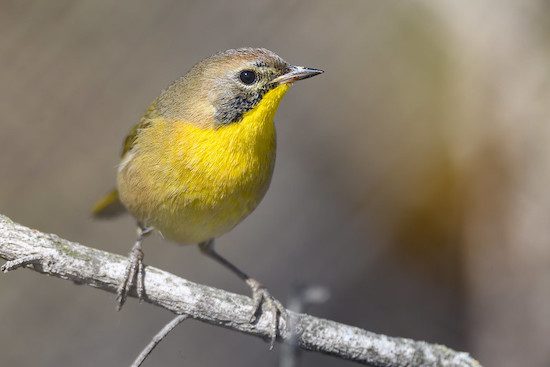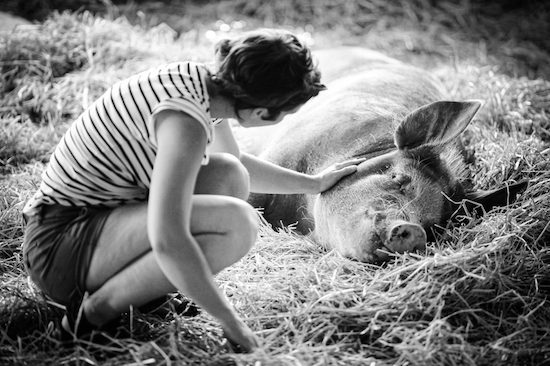


American Bird Conservancy: Migratory birds are streaming northward at this moment, filling American neighborhoods and yards with song. If you are fortunate enough to spot the Common Yellowthroat (above), it means that once again, these birds have surmounted the myriad threats they face during their journey. Birds contribute nearly $80 billion to the U.S. economy, but collisions with glass windows, walls, and other structures kill up to a billion birds a year in the U.S. alone—making this one of the greatest human-caused threats to bird populations. But there are solutions, and even during these unprecedented times, there’s still much you can do for birds from home, like making your backyard bird-friendly—and telling your elected federal lawmakers you want them to help reduce bird collisions by co-sponsoring the Bird-Safe Buildings Act (H.R. 919), which would reduce these needless deaths by requiring public buildings to incorporate bird-friendly building design and materials, which would also help reduce of energy use and operating costs.
>>>Urge your U.S. senators and U.S. representative to co-sponsor the Bird-Safe Buildings Act.
Lady Freethinker: In a devastating step backward for animal rights and public health, China’s Ministry of Agriculture and Rural Affairs could reclassify mink, raccoon dogs, and foxes as “livestock” rather than wild animals, likely in an effort to skirt the country’s recently imposed wildlife trade ban and allow the fur industry to continue to operate uninhibited. Every year, over 50 million animals are needlessly tortured and killed at fur farms in China, where innocent creatures are crammed into dirty, overcrowded cages. They waste away in their own feces, malnourished and suffering, awaiting death from electrocution, toxic gases or bludgeoning. These conditions are similar to those that experts believe sparked the COVID-19 pandemic. Humans and potentially disease-ridden animals come within unnaturally close proximity to one another, giving deadly diseases the chance to spill over onto a human host. Two fur farms in the Netherlands were recently quarantined after several mink tested positive for COVID-19, serving as a sobering example of just how interconnected animal cruelty and human health are. China has recently taken steps in the right direction—including banning the dangerous wildlife trade—but these policies must be enforced.
>>>Urge China’s Ministry of Agriculture and Rural Affairs to keep mink, raccoon dogs and foxes classified as wildlife, not livestock.
Physicians Committee for Responsible Medicine: In response to COVID-19, Wayne State University in Detroit announced on March 25 that it was sending most staff and faculty home and cutting back to a “minimal operational level.” In response to the Physician Committee’s request that Wayne State release any dogs in the study and end the experiments once and for all, university president M. Roy Wilson, MD, responded. Dr. Wilson wrote that five dogs are currently assigned to the experiments, and the university is finding homes for two dogs who aren’t yet “instrumented”—in other words, they haven’t yet had devices implanted in their hearts and around major blood vessels. But the other three dogs have had devices implanted and “are completing their studies,” which means they are being forced to run on treadmills while heart failure and/or hypertension are induced. Even when they are not running on treadmills, the dogs often have their hearts artificially “paced” at more than twice the upper normal rate. The heart failure and hypertension experiments have been conducted at Wayne State since 1991 and cost taxpayers $11.6 million. While legislation is pending in the Michigan legislature that would outlaw such experiments, now is the time for the university to end them once and for all.
>>>Urge Wayne State University president M. Roy Wilson to release any dogs currently in the studies and end the experiments.
Cause for concern…

- Climate change contributes to skyrocketing rates of infectious disease (Abrahm Lustgarten, ProPublica)
- Sea level could rise by more than 1 meter by 2100 if emission targets are not met (Jonathan Watts, The Guardian)
- ‘Stealth bailout’ shovels millions of dollars to oil companies (Jennifer A. Dlouhy, Bloomberg)
- Trump signs order easing regulatory enforcement on businesses (Cheryl Bolen, Bloomberg Environment)
- Shocking video shows Asian wet markets still selling bats, monkeys (Adam Schrader, New York Post)
- Journalist arrested for reporting on palm oil tycoon’s alleged land grab in Borneo (Hans Nicholas Jong, Mongabay)
- Russian supertrawlers off Scottish coast spark fears for U.K. marine life (Karen McVeigh, The Guardian)
- Food workers handling meat eventually experience psychological numbness and decreased empathy for the animals who died in the process (Lancaster University)
- Trump administration denies Endangered Species Act protection to Pacific fisher, a weasel-like woodland mammal (Steve Gorman, Reuters)
- New Zealand bails out cruel greyhound racing industry with $44 million COVID-19 emergency support package (Zane Small, Newshub)
- Lack of insects in cities limits breeding success of urban birds (British Ecological Society)
Round of applause…

The last time daily carbon emissions levels were this low was in 2006, according to a new study by scientists at the University of East Anglia in the United Kingdom (Photo credit: hyper sapiens/Flickr)
- COVID-19 crisis causes unprecedented 17 percent plunge in global carbon emissions (Victor Tangermann, Futurism)
- Vegan diet can help prevent pandemics like COVID-19, 300 doctors say(Totally Vegan Buzz)
- California animal sanctuary sent two planes to Iowa to rescue 1,000 chickens who were going to be euthanized (Amanda Jackson, CNN)
- ‘Happy Cows’ advertisement ruled misleading (Lisa Isaacs, Independent Online South Africa)
- Activists use social distancing to draw attention to animal confinement (Dylan Forest, Animal People Forum)
- Emissions from road construction could be halved using today’s technology(Green Car Congress)
- Scientists successfully develop ‘heat resistant’ coral to fight bleaching (BBC News)
- Could lockdown be the death of bullfighting in Spain? (Ashifa Kassam, The Guardian)
- Another dog meat farm closes in South Korea (Kitty Block, Humane Society of the United States)
Parting thought…

“Mainstream religions continue to limit their potential and responsibility to serve the common good because they are human-centered. The spiritual core is corrupted and displaced by materialism and objectification, especially of animals; so many species are treated as objects and commodities and everything in the natural world as an exclusive human resource.” —Dr. Michael Fox